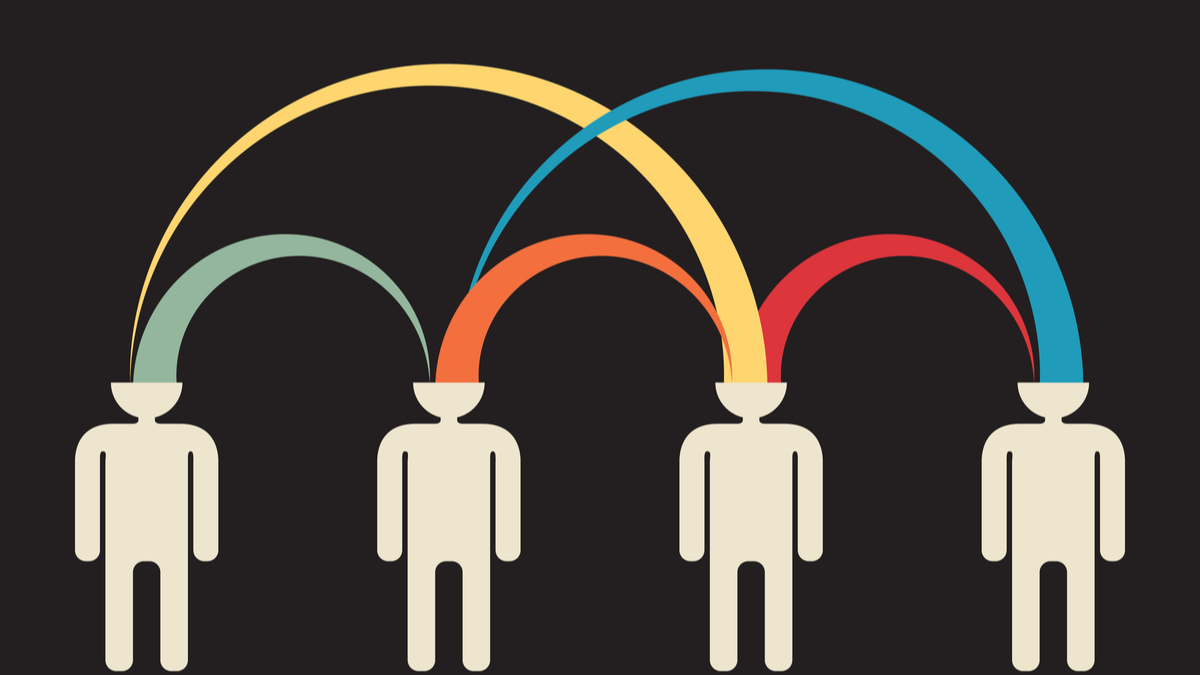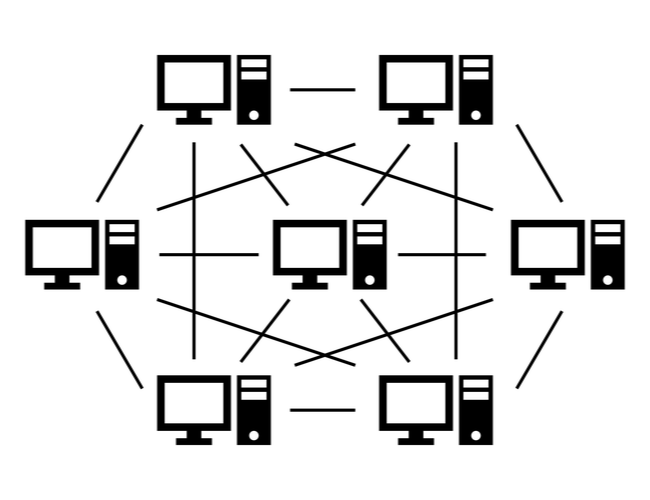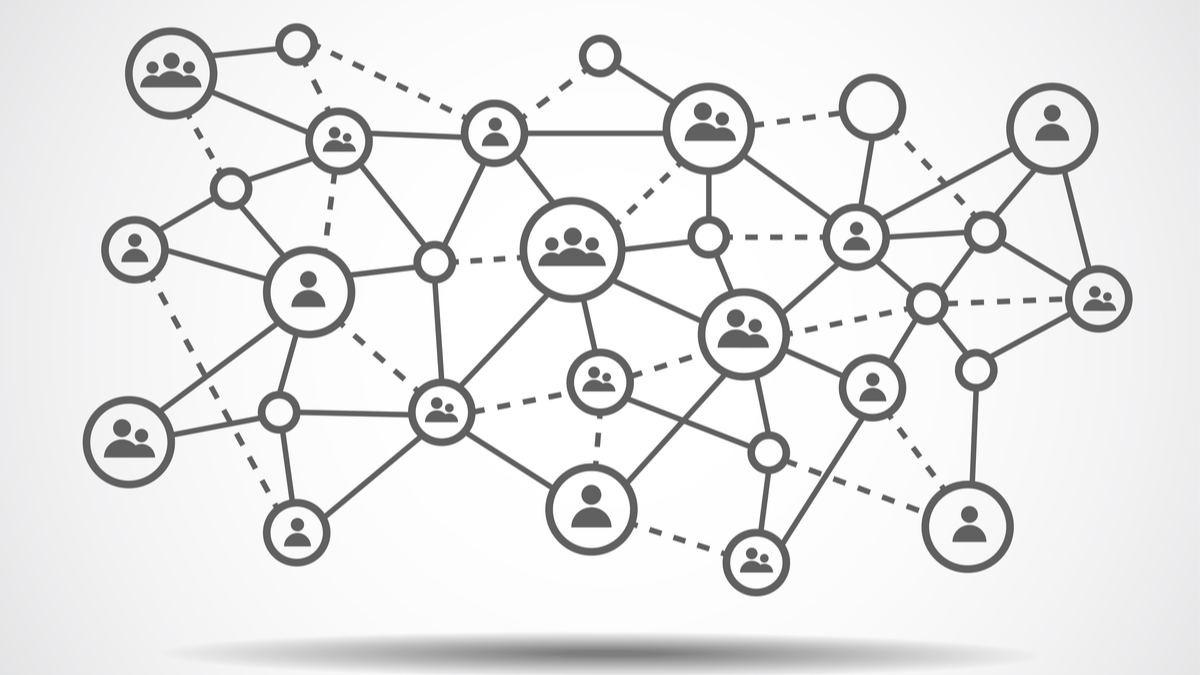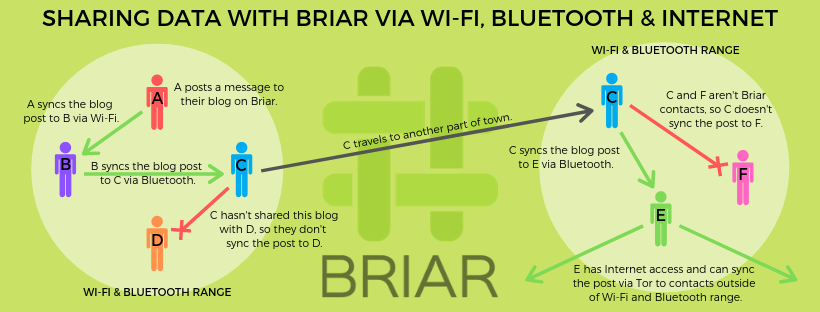Quick Links
Peer-to-Peer messaging is as reliable as Facebook Messenger or Discord, but you maintain control of your data and don't rely on a third-party server to talk with people. It's a better way to communicate.
Peer-to-Peer Messaging Basics
When you send a message to a friend over Facebook, WhatsApp, Discord, or most other messaging services, the message is relayed from you, the client, to a central server. The central server then routes the message to a second client: your friend. Very broadly, the client requests services, and the server fulfills them. This is called the client-server model. The client-server model is extremely common and is utilized by most of the online services you're familiar with --- everything from Netflix and Facebook to World of Warcraft. All of your data is stored by a third party, and you rely on them to completely. You have no way to verify that they're handling your data responsibly, and you have to trust that they'll continue to allow you to use their service.
Peer-to-peer (P2P) services eliminate those problems. It is possible for computers to exchange information directly and completely skip the middleman. Instead of a client delivering a message to a server to relay to a second client, the clients just transmit data between themselves. In P2P messaging apps, each participant effectively functions as both a client and a server simultaneously.
Improved Reliability
We've all experienced the occasional frustration when our favorite messaging platform is down. P2P messaging platforms don't suffer from that same point of failure. Because P2P messaging programs transmit information directly between the people texting, they'll continue to operate as long as the network (like the internet, or a LAN) between the devices is still working.
Phones can even link together using Wi-Fi or Bluetooth to exchange information P2P without any existing network infrastructure at all. It can be useful when, for any number of reasons, conventional wireless networks --- like Wi-Fi networks or cellular data --- are unavailable. These P2P networks are often referred to as "Wireless Ad Hoc Networks" or "Mesh Networks." The name mesh networks comes from how the network layout looks when you represent it visually.
Strictly speaking, not all mesh networks are wireless ad hoc networks, but the terms are often used interchangeably in this context.
Usually, networks of this kind allow participants to drop in and out freely as they go in and out of range, though only if they have permission to connect with other devices in the network.
Better Privacy
Encryption is a way to protect data from prying eyes. All popular messaging services today store your messages encrypted, but there is a caveat there --- in many cases, they can also decode the messages without your knowledge. That means that even though your messages might be safe (sorta) from a third party attacker, it is at least possible they could be read by the company storing them for you.
There is a step up from regular encryption called end-to-end encryption (E2EE). E2EE setups encrypt the message at the sender's device, and the message can only be decrypted by the designated recipient(s). Not even your internet service provider (ISP) can read them.
Combining end-to-end encryption with P2P messaging offers the best privacy solution. Your messages are encrypted, which means no one can read them without the encryption key, and copies of the files aren't stored on central servers somewhere.
The last point is important if you're concerned about keeping your conversations private forever. Current encryption schemes are robust and effective against modern attacks, but there is no guarantee that they will be able to resist attempts to crack the encryption in the future --- especially when quantum computers become a viable technology.
The Downsides of P2P Messaging
P2P messaging services do have a few drawbacks. They often perform poorly in applications that require all of the clients be synchronized, since the performance of the group is usually limited by the connection of the slowest member. Additionally, P2P services usually have larger storage requirements than their client-server alternatives, since at least one full copy of every file or message must exist between the participating users.
As an example, consider Facebook Messenger. You and a friend have sent thousands of dank memes back and forth, yet the memes aren't using up storage on your phones. That is because the burden of storing those files in your chat history is placed on Facebook's servers. If you were using a P2P messaging app, however, the files would need to be stored on both of your devices if you both want to see them, or one person would have to re-share the files when they're needed.
P2P Messaging Apps You Should Use
Firechat is probably the most famous messaging app that allowed you to use P2P messaging over Bluetooth or Wi-Fi, but it has since become defunct. As of March 2022, there were relatively few apps that are ready for everyday use.
Briar for Android is the only app of its kind we can recommend as of March 2022. (Unfortunately, it doesn't run on iPhones.) There are others, but they're either still in development, have poor user reviews, or have stopped receiving updates.
Briar is fully equipped with end-to-end encryption, and allows you to connect with your peers over the internet, via the Tor network, Wi-Fi, or Bluetooth. You have to manually add any contact you want to connect with, so you can be sure that you're talking to the right person. Adding someone is simple --- just like a lot of messaging apps, you can add each other with a link, or by scanning a QR code.
It also allows you to make posts to a forum or blog that is visible to your contacts. If one of your contacts is out of range, a mutual contact can even act as a relay.
We tested Briar over a few weeks and found that the Bluetooth and Wi-Fi messaging worked well within the expected ranges.
Even if you're not worried about encrypting your messages, it's nice to know that you could text or send files to your nearby friends when your Wi-Fi and data are out --- or when you're in an area with spotty service, like on a camping trip in the middle of nowhere.




